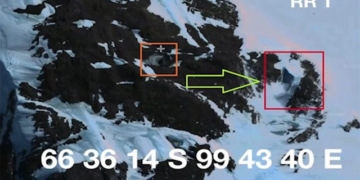A Finnish company has installed a system using sand as its main component, helping to store green energy in the form of heat for several months.
A young engineering team from Polar Night Energy has completed the installation of the world’s first fully operational “sand battery” in Kankaanpää, Finland, as reported by BBC on July 4th. The new device is located at the Vatajankoski power plant, which operates the region’s heating system.

The sand battery has been installed and is functioning well in Kankaanpää. (Photo: BBC)
Climate change and rising fossil fuel prices have prompted many organizations and companies to invest in renewable energy production. Solar panels and wind turbines can be quickly installed and contribute to the power grid, but they also present significant challenges.
The most difficult issue is interruption—how to maintain electricity when the sun is not shining and the wind is not blowing? Additionally, integrating more renewable energy into the power grid requires solutions for balancing the network, as both excess and insufficient electricity can lead to negative consequences.
An effective remedy for these issues is a large-scale battery system capable of storing and balancing energy demand. Currently, most batteries are made from lithium, which is expensive, bulky, and can only handle a small amount of surplus electricity.
The sand battery can store green energy for several months. The key component of this device is about 100 tons of sand piled inside a silo (a tall, round structure typically used to store grain or animal feed).
The battery operates as follows: Cheap surplus electricity heats the sand up to 500 degrees Celsius using resistive heating. This process creates hot air that circulates through the sand via a heat exchange device. Sand is a very effective medium for thermal storage, with minimal loss over time. The development team has stated that their device can keep the sand at 500 degrees Celsius for several months.
When needed, the battery releases hot air to warm water for the regional heating system. The water is then pumped to homes, offices, and even swimming pools. This method addresses concerns about heat supply during the long, cold winters in Finland.
One of the current major challenges for Polar Night Energy is whether the sand battery technology can be scaled up to truly make a difference, and whether developers can use it to generate both electricity and heat.
Experts have noted a significant decrease in performance when sand is only used to return stored electricity to the grid. However, storing green energy in the form of heat for extended periods offers substantial benefits for industries, as most heat used in food, beverages, textiles, and pharmaceuticals comes from burning fossil fuels.



















































